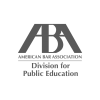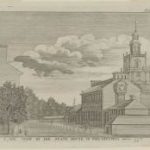Students will compare the preamble of the U.S. Constitution with the preambles from two state constitutions. They will extract common themes from the three, and note key differences. The preamble to the Constitution has not been changed since its drafting; the Constitution, however, has been amended. Students will reevaluate the ideals expressed in the Preamble and consider their relevance today. They are given the chance to rewrite the Preamble, share their rationale, and explain the values contained expressed inside.
The Constitutional Convention: Fine Tuning the Balance of Powers
History is the chronicle of choices made by actors/agents/protagonists in specific contexts. This simulation places students in the midst of the Constitutional Convention, after the Committee of Detail has submitted its draft for a new Constitution on August 6. With that draft’s concrete proposals on the floor, students will ponder questions such as: Is this the Constitution we want? Are the people adequately represented? Are the branches well structured? By engaging with these questions mid-stream, before the Convention reached its final conclusions, students will experience the Constitutional Convention as process, a supreme example of collective decision-making.
The Constitution: Drafting a More Perfect Union
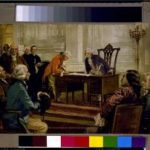
Students will analyze an unidentified historical document and draw conclusions about what this document was for, who created it, and why. After the document is identified as George Washington’s annotated copy of the Committee of Style’s draft constitution, students will compare its text to that of an earlier draft by the Committee of Detail to understand its evolution.
Constitution Primary Source Set
Drafting the Nation
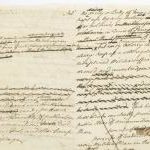
As the Framers drafted different versions of our founding documents, their ideas of what it meant to be a republic also changed. In this unit, four lessons based on the drafts of the Articles of Confederation, Declaration of Independence, and the Constitution, held at the collection at HSP, allow students to explore the language and ideas behind these pivotal documents
Constitution of the United States
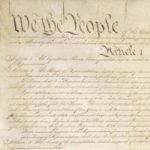
The original U.S. Constitution is on permanent display at the National Archives in Washington, DC. Drafted in 1787 after a hard-won victory in the War for Independence, this document codified the spirit of the Revolution into an ingenious practical scheme of government to promote the welfare of all its citizens.
Founding Documents: Articles of Confederation Podcast
While a famous committee of five drafted the Declaration of Independence, a far more unsung committee of thirteen wrote America’s first rulebook. The Articles of Confederation was our first constitution, and it lasted nine years. If you prefer Typee to Moby Dick, Blood Simple to A Serious Man, or Picasso’s Blue Period over Neoclassicism, you just might like the Articles of Confederation.
The fable of its weaknesses, strengths, rise, and downfall are told to us by Danielle Allen, Linda Monk, Joel Collins, and Lindsey Stevens.
This short episode includes a one-page Graphic Organizer for students to take notes on while listening, as well as discussion questions on the back side.
Impeachment Proceedings
The process of impeachment was outlined in the Constitution when it was drafted in 1787. To date, 19 officials, including judges, cabinet members, senators, and presidents, have been impeached and stood trial. The crimes these individuals have been charged with range from perjury to conspiracy to intoxication on the bench. It is important to note that impeachment is not the actual removal from office, but merely the process to remove an official.
Alexander Hamilton Primary Source Documents
Alexander Hamilton, the subject of Lin-Manuel Miranda’s eponymous Broadway show, influenced the drafting the United States Constitution, ensured its ratification, and helped to save the fledgling nation from financial ruin. Learn more about Hamilton’s role at the Constitutional Convention, New York Ratifying Convention, and in drafting the famous Federalist Papers by exploring historical documents in the ConSource digital library.
The Constitutional Convention: What the Founding Fathers Said

By examining records of the Constitutional Convention, such as James Madison’s extensive notes, students witness the unfolding drama of the Constitutional Convention and the contributions of those who have come to be known as the Founding Fathers: Madison, Benjamin Franklin, George Washington, and others who played major roles in founding a new nation. In this lesson, students will learn how the Founding Fathers debated, and then resolved, their differences as they drafted the U.S. Constitution.
